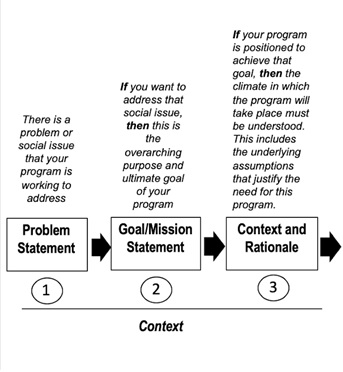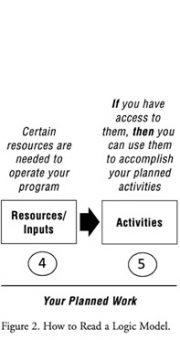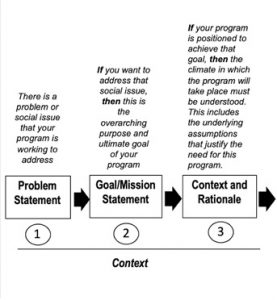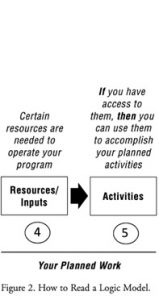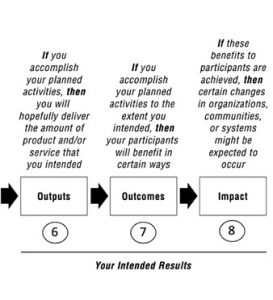What are the components of a Logic Model?
While there are several ways to construct and design a logic model, our office has identified 8 essential components that partners should include in their logic models.
The sections below will list, explain, and provide guidance on the 8 components, with a real-world example stitched throughout to assist in your understanding.
Throughout the guidance below, we will provide an ongoing example to illustrate each component of a logic model. The example we use – a mentoring program (“On Track”) serving high schools with low graduation rates – is based on an example provided in the Community Toolbox logic model guidance.
